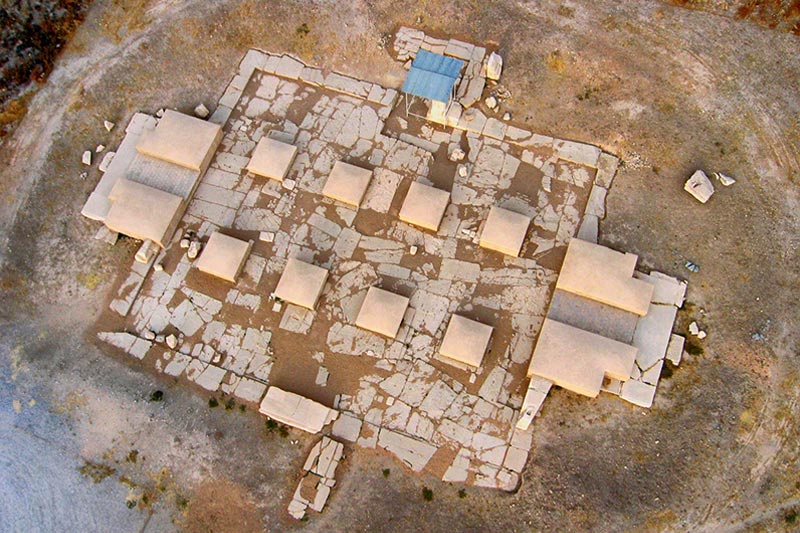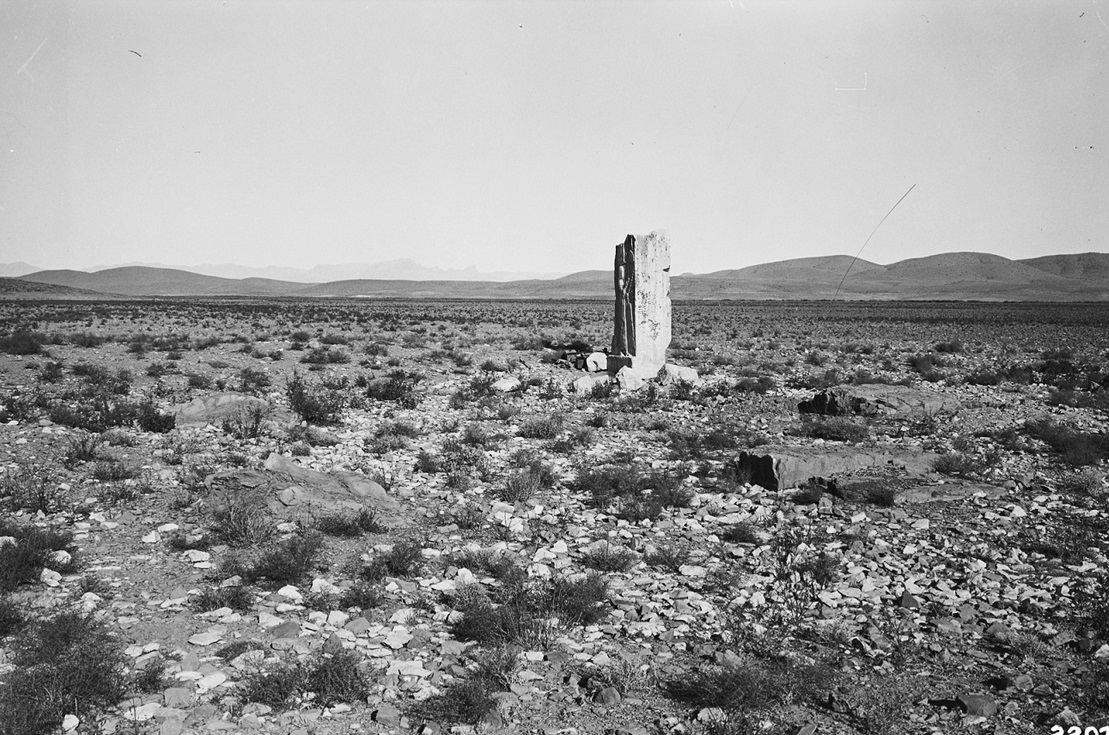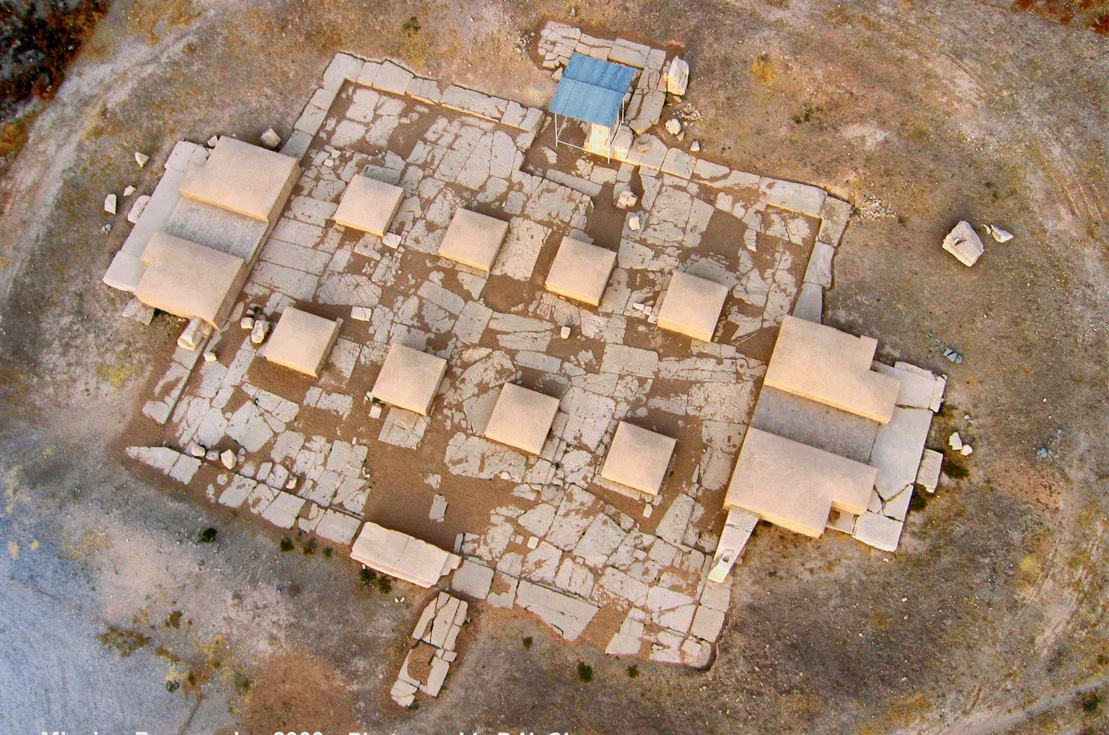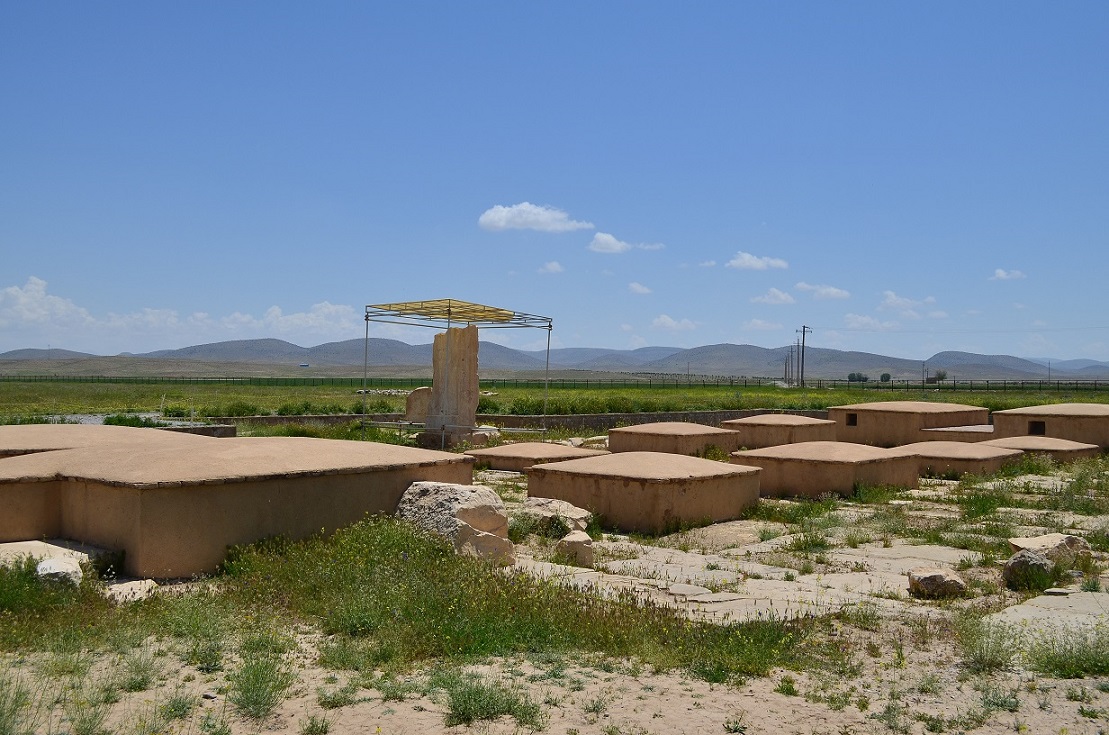Located at the eastern edge of the palace vicinity, Gate R (Herzfeld’s Palace R or Palace with the Relief) is the earliest known example of a freestanding monumental gateway. It may well have served as the inspiration for the famous Gate of Xerxes or the Gate of All Nations at Persepolis. Here, the gate consists of a rectangular columned hall (26.40 m x 22.60 m in size) pierced by two opposite monumental doorways on its long axis and by two side doorways on its cross axis.
Although all that survived of the building are the stone foundations and some bases of columns, the upper parts of the walls must have been formed of mud-brick, possibly positioned in the manner of the Gate of Xerxes. The roof of the hall was supported by two rows of four columns, of which only the stone plinths are partly preserved. The large size of the latter (about 2 x 2 meters) suggests that the original stone columns must have towered over 16 meters high, which would have made the gate the tallest structure at Pasargadae.
The overall concept of Gate R is without precedent. Although monumental gateways had long been associated with the ceremonial display in the Near East, but the idea of separating the gateway from an associated wall appeared here for the first time. This splendid isolation strengthens the symbolic power of the gate, which is now entirely monumental in effect. It is indeed possible that Cyrus might have intended to give the structure an even greater significance. By not emphasizing on its defensive role in favor of its ceremonial function, Cyrus could have been displaying both the strength of an empire that had little need of permanent defenses as well as the kindness of a ruler who sought to welcome rather than exclude people from his territory.









